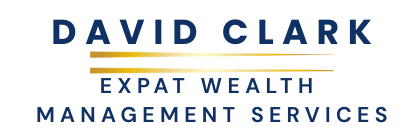Your Path to Financial Success Starts Here
Our expert team is here to guide you every step of the way, helping you navigate the complexities of personal finance.
Book a MeetingNeed Help?
Social Networks
401(k) Rollover & Retirement Planning
Expat Wealth Management Services- David Clark > 401(k) Rollover & Retirement Planning
Did you leave your 401(k) retirement savings behind when you left your old job?
Do you know your options and which one is best for you?

What is a 401K Rollover?
A 401(k) is a tax-advantaged retirement plan that allows you to put aside a percentage of your monthly income, while your employer can match some or all of those contributions.
However, when you stop working for that employer, your 401(k) is often left dormant and not actively managed. The impact of this can disrupt your future lifestyle and retirement plans. If you let your 401(k) remain inactive, you will no longer be able to add to it, and, naturally, contributions from your employer will cease too.
When you leave an employer for non-retirement reasons, whether this is for a new employer or to be self-employed, you have four options for your 401(k) plan
4 Options to Choose From
Your 401(k) Options
Leave Your 401(k) With Former Employer
Most companies, but not all, allow you to keep your 401(k) retirement plan with them after you leave. Due to a lack of understanding, this becomes the default choice for many. In this case, your previous employer will continue to run your 401(k) and decide important things such as the available investment options. Your withdrawal options may be limited.
Roll Over Your 401(k) To Your New Employer
If your new employer offers a 401(k), and you are eligible to participate, you should be able to roll over your old plan to them. You should ensure you understand your new plan rules and consider the range of investment options available.
Cash Out Your 401(k)
You can take out the money from your old employer’s 401(k). The funds will be taxed as ordinary income at your current tax rate. Also, to avoid paying an additional 10% penalty, you need to be 55 years old if you’re no longer going to be working. If you’re still working, you must wait until age 59½ to access the money without this penalty.
Roll Over Your 401(k) To An IRA
Moving your 401(k) to an Individual Retirement Account (IRA) means you have access to a wider range of investment opportunities, frequently at a lower cost. Your money still continues to grow tax-deferred. An IRA also facilitates greater flexibility for withdrawals, allowing you to choose when to drawdown during your retirement.
Decision Making
So which of these 401(k) options should you use?
Expatriates have multiple options for handling their 401(k) plans after leaving the U.S., including keeping the account as-is, rolling it over into an IRA, or transferring it into a foreign retirement plan where applicable. Understanding the pros and cons of each option is essential before making any decisions. We provide general educational content on this topic but do not offer personalized financial advice or specific rollover recommendations.
Expat Wealth Management Services provides general financial education and information only. We are not a registered investment adviser and do not provide personalized investment, financial, tax, or legal advice. Visitors should consult a qualified professional before making any financial decisions

Leave Us Your Details
